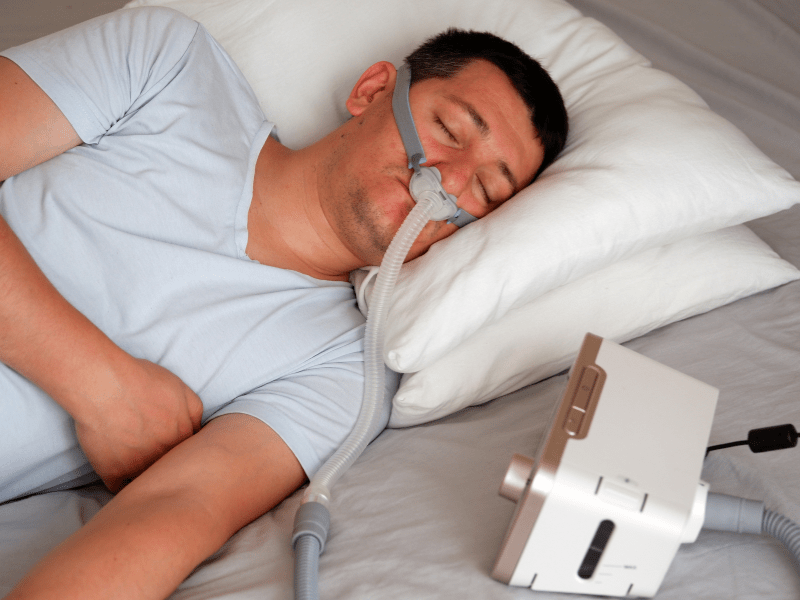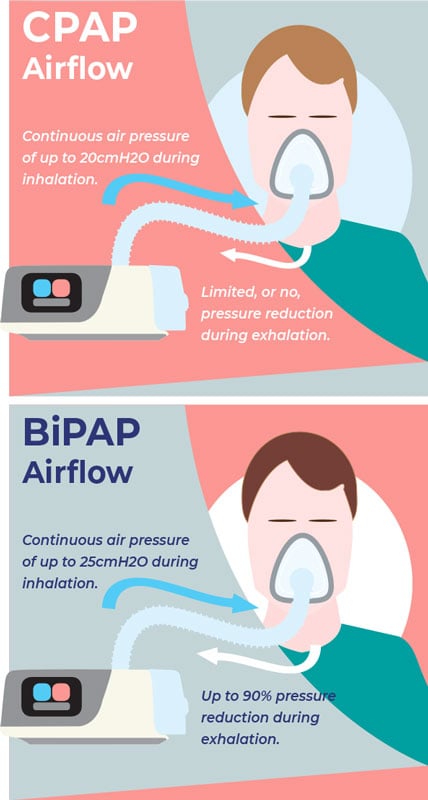Bipap vs. CPAP: Which Is the Best for Your Sleep Condition?
When browsing the intricacies of rest disorders, the choice between BiPAP and CPAP treatment is an essential factor to consider. While CPAP provides a stable airflow ideal for obstructive rest apnea, BiPAP's dual pressure settings may enhance comfort for those with more complex respiratory concerns.
Understanding Sleep Disorders
Rest problems include a series of problems that disrupt typical rest patterns, impacting both the high quality and period of rest. These problems can manifest in various forms, consisting of sleeping disorders, rest apnea, narcolepsy, restless leg disorder, and parasomnias. Each problem offers distinct difficulties, usually bring about significant daytime fatigue, cognitive disability, and psychological disturbances.
Sleeping disorders is defined by problem dropping or remaining asleep, while rest apnea entails repeated disturbances in breathing during sleep, usually bring about fragmented rest. Narcolepsy, on the other hand, is noted by excessive daytime drowsiness and abrupt rest assaults. Uneasy leg disorder causes uncomfortable feelings in the legs, prompting an irrepressible impulse to move them, which can likewise hinder the ability to drop off to sleep.
The impact of rest disorders prolongs past private health and wellness, affecting total performance, relationships, and quality of life. Comprehending the certain nature of each condition is vital for efficient diagnosis and therapy. As rest health comes to be increasingly recognized as an important element of overall wellness, dealing with these conditions is vital for enhancing both sleep quality and everyday functioning.
Exactly How CPAP Works
Constant Positive Airway Stress (CPAP) therapy is regularly employed as a primary therapy for obstructive sleep apnea (OSA) The system of CPAP entails the usage of a machine that supplies a consistent stream of air with a mask used during rest. This air flow keeps favorable stress in the air passage, preventing the collapse or obstruction of the throat that can occur throughout rest.
When a client inhales, the CPAP device offers a continuous flow of air, making certain that the respiratory tract remains open - BiPAP Rental. This not only relieves the signs of OSA, such as snoring and interrupted rest patterns, however additionally decreases the affiliated health and wellness dangers, consisting of cardiovascular complications and daytime fatigue
The stress settings on a CPAP device can be customized to satisfy private person requirements, typically determined with a sleep research study. Individuals usually undertake titration researches to locate the optimal stress level for their special condition. Regular follow-up and changes may be required to make certain efficiency and comfort. Overall, CPAP therapy has been revealed to substantially enhance the quality of sleep and overall health for individuals experiencing obstructive rest apnea.
Just How BiPAP Functions
BiPAP, or Bilevel Positive Airway Stress, is a customized form of non-invasive ventilation that is especially advantageous for individuals with problems such as complex rest apnea or respiratory conditions. Unlike CPAP, which delivers a continuous stream of air at a single stress, BiPAP gives two unique stress setups: a greater inspiratory stress for inhalation and a reduced expiratory stress for exhalation. This dual-pressure approach permits for easier breathing, decreasing the effort called for during exhalation.
The tool operates with a mask fitted over the nose or mouth, attached to a device that produces air pressure. When the person inhales, the machine supplies the greater stress to assist with air movement, guaranteeing that the respiratory tract continues to be open. Upon exhalation, the maker automatically minimizes the stress, making it more comfy for the client to breathe out.

Secret Differences In Between BiPAP and CPAP

On the other hand, BiPAP (Bilevel Positive Airway Pressure) uses 2 various pressure settings: one for inhalation and a lower one for exhalation. This twin stress system enables for more comfy breathing, especially for individuals who have problem with breathing out against a constant stress. BiPAP is frequently suggested for people with complex rest apnea, chronic obstructive pulmonary illness (COPD), or those who call for added assistance see it here during rest.
In addition, the intricacy of BiPAP gadgets commonly causes a greater expense and calls for more careful titration than CPAP. BiPAP Rental. Comprehending these vital differences can aid in acknowledging which gadget may be better for certain rest problems, setting the foundation for educated therapy decisions
Picking the Right Therapy
The decision in between BiPAP and CPAP therapy mostly pivots on the specific qualities of the rest disorder, the individual's overall health, and their convenience with the tool. CPAP, which provides a continual stream of air, is commonly recommended for obstructive rest apnea (OSA)
Alternatively, BiPAP offers 2 levels of pressure: one for inhalation and a lower one for exhalation. This dual stress system is advantageous for people with complex rest apnea or those who experience trouble exhaling against a continual stress. Additionally, BiPAP is commonly recommended for people with breathing conditions, such as persistent obstructive lung condition (COPD), where differing pressure setups can enhance convenience and conformity.
Ultimately, a comprehensive assessment by a sleep professional, consisting of a rest research study, can aid navigate to this website determine which treatment aligns finest with the person's demands. Elements such as convenience, simplicity of usage, and particular clinical conditions ought to also be considered to enhance treatment end results.
Conclusion
In summary, both BiPAP and CPAP serve unique functions in the management of rest conditions. CPAP is reliable for obstructive rest apnea via regular airflow, while BiPAP uses dual stress setups that boost comfort for those with intricate sleep apnea or respiratory system problems. The selection between these treatments must be led by private demands and conditions, requiring an extensive evaluation by a rest expert to guarantee optimum treatment outcomes and improved quality of rest.

Generally, CPAP therapy has been shown to significantly improve the high quality of sleep and total health for individuals experiencing from obstructive sleep apnea.
BiPAP is frequently advised for clients with complicated sleep apnea, chronic obstructive pulmonary disease (COPD), or those that need additional assistance throughout sleep.
CPAP is effective for obstructive sleep apnea via regular airflow, while BiPAP supplies double pressure setups that improve comfort for those with complex sleep apnea or respiratory concerns.